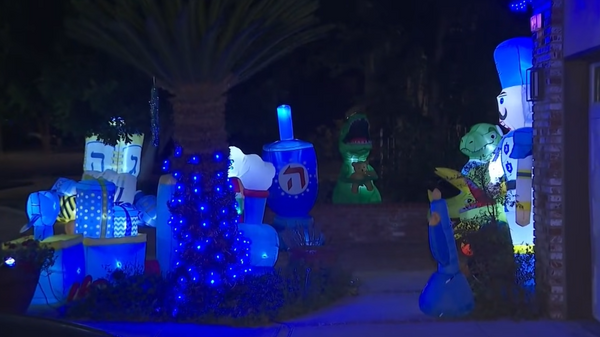/Tesla%20Inc%20logo%20by-%20baileystock%20via%20iStock(1).jpg)
Tesla (TSLA) is no stranger to controversy, but the stakes may be higher than ever as the electric vehicle giant becomes entangled in a high-stakes legal showdown with the California Department of Motor Vehicles (DMV). At the center of the dispute are allegations that Tesla misled consumers by overstating the capabilities of its Autopilot and Full Self-Driving (FSD) technologies — claims that, if upheld, could result in the temporary suspension of the company’s dealer license in California.
This legal battle comes at a particularly vulnerable time for Tesla. Just a day ago, the company reported its steepest revenue decline in over a decade, and CEO Elon Musk warned of “a few rough quarters” ahead. For investors already concerned about Tesla’s weakening fundamentals, the prospect of regulatory penalties in a key market only adds to the uncertainty.
In light of all this, investors are left with a tough question: Should you hold, buy the dip, or head for the exits? Let’s take a closer look.
About Tesla Stock
Tesla (TSLA) is a prominent innovator dedicated to accelerating the global transition to sustainable energy. The Elon Musk-led powerhouse designs, develops, manufactures, leases, and sells high-performance fully electric vehicles, solar energy generation systems, and energy storage products. It also offers maintenance, installation, operation, charging, insurance, financial, and various other services related to its products. In addition, the company is increasingly focusing on products and services centered around AI, robotics, and automation. Its market cap currently stands at $1.07 trillion.
Shares of the EV maker have fallen 24.6% on a year-to-date basis.
Tesla Sales Could Be Temporarily Suspended in California
This week, Tesla faces off with the California Department of Motor Vehicles (DMV) over allegations that it overstated the capabilities of its Autopilot and Full Self-Driving technology, thereby misleading consumers. The stakes are high as the regulator aims to suspend Tesla’s dealer license, which allows the company to sell vehicles in its biggest market in the U.S.
The California DMV has been engaged in a years-long legal dispute with Tesla over how the automaker markets its “Autopilot” and “Full Self-Driving Capability” advanced driver assistance (ADAS) systems. The agency alleges that Tesla is misrepresenting the capabilities of its ADAS through both the naming of the systems and the way the company and its CEO promote them. More precisely, the California regulator asserts that Tesla violated state law by making “untrue or misleading” statements in 2021 and 2022 while promoting its vehicles with advanced driver-assistance systems, including claims that the features were “able to conduct short and long-distance trips with no action required in the driver’s seat.”
Meanwhile, Tesla has contended in legal filings that the statements in question are protected under the First Amendment of the U.S. Constitution as free speech. The company’s lawyers also argue that the marketing statements cited by the DMV have been taken out of context and that the regulator is overlooking Tesla’s warnings and disclosures regarding the systems. “Tesla repeatedly and explicitly makes clear that its vehicles are not autonomous and require active driver supervision,” the company said in a February 2024 filing.
Now, tensions are rising as the court holds a five-day hearing in Oakland on the case, which began on Monday and will run throughout the week. Notably, the hearing before an administrative agency judge coincides with an ongoing jury trial in Miami, where Tesla faces allegations that Autopilot was partially responsible for a 2019 crash involving a distracted Model S driver that resulted in a pedestrian’s death. The DMV is now seeking a 30-day suspension of Tesla’s dealer license in California.
“Tesla has been misleading consumers for years,” said Christopher Beatty, supervising deputy attorney general for California, who is representing the state’s DMV, during his opening statement at an administrative court hearing in Oakland on Monday. Also, Melanie Rosario, a commander-sergeant with the DMV, testified in court Monday that Tesla’s branding of its Autopilot and Full Self-Driving features was “misleading” and “contradictory,” stating that the terms suggest the vehicle is capable of driving itself. In Tesla’s opening statement, the company’s lawyers contended that it is “impossible for a reasonable consumer to be misled” by the branding of its products, while also claiming that the company is “getting closer every day” to delivering fully autonomous vehicles.
If the DMV succeeds in temporarily suspending Tesla’s right to sell vehicles in California, it could severely impact the company’s performance this quarter. As noted earlier, California is Tesla’s largest market in the U.S., accounting for roughly a third of the country’s EV sales. What makes the situation even more ironic is that the looming end of the federal tax credit in Q4 is driving a surge in demand into the current quarter. And much of that demand was expected to come from California.
Tesla Warns of Rough Patch Ahead
Tesla released its Q2 earnings results yesterday after the market closed, and the stock is currently down 8% after the EV maker reported its biggest revenue decline in at least a decade. CEO Elon Musk also warned of tough times ahead for the company as incentives such as the EV tax credit phase out in the U.S. “We probably could have a few rough quarters,” Musk said. Musk’s remarks were his most direct yet regarding the impact of the tax bill signed by President Donald Trump this month on Tesla. Besides phasing out $7,500 tax credits for EV purchases, the law also dismantled federal fuel-economy standards that have been a significant source of revenue for Tesla over the years. Let’s take a closer look at Tesla’s Q2 figures.
The company’s total revenue slumped 11.8% year-over-year to $22.5 billion. Although the top-line figure was better than some feared, it still represented the company’s worst revenue drop in more than a decade. The decline in total revenue was once again mainly driven by a downturn in Tesla’s core automotive segment, which saw a 16% year-over-year revenue drop to $16.7 billion. Tesla attributed the decline to a 14% drop in vehicle deliveries during the second quarter and lower revenue from regulatory credit sales. Notably, revenue from regulatory compliance credits that Tesla sells to competing automakers dropped to $439 million in Q2, down 26% from the previous quarter and 51% year-over-year. As mentioned earlier, this revenue stream is at risk following the tax law signed by Trump this month, which removed the penalties automakers faced for not complying with federal fuel-economy standards. Another interesting thing I noticed is that automotive revenue fell at a faster pace than vehicle deliveries, indicating that average selling prices continued to drop amid intense competition.
While the weakness in the automotive business was expected, the biggest surprise for me was the energy segment. The energy segment had always been a bright spot in the past, helping to partially offset the challenges faced by the automotive segment. However, this time Tesla’s energy business posted a 7% year-over-year revenue decline to $2.8 billion in Q2, mainly due to a decrease in the average selling price of Megapack. I view this as a major negative for the company, as it seriously undermines my earlier bullish outlook on the energy business. Meanwhile, services revenue continued to perform well, rising 17% year-over-year to $3.05 billion.
On the profitability front, the operating margin collapsed in Q2, dropping 219 basis points year-over-year to 4.1%, highlighting a clear erosion of competitive advantage. Tesla’s adjusted EPS plunged 23% year-over-year to $0.40, but was in line with expectations.
On the positive side, Musk said during the earnings call that production of a more affordable EV had started, with sales potentially beginning in the fourth quarter. The model, which Musk described as similar to the Model Y, is considered vital for boosting sales. As for the robotaxi, Tesla stated that it plans to improve and expand the service, which was launched this summer in Austin. The company is pursuing regulatory approval to launch in the San Francisco Bay Area, as well as in Nevada, Arizona, Florida, and several other places, according to Musk. “We’ll probably have autonomous ride-hailing in about half the population of the U.S. by the end of the year,” Musk said. “That’s at least our goal, subject to regulatory approvals.”
What Do Analysts Expect For TSLA Stock?
Wall Street analysts remain split on Tesla, with the stock currently carrying a consensus “Hold” rating. While 12 analysts rate the stock as a “Strong Buy” and two as a “Moderate Buy,” 16 recommend holding, and 10 have issued a “Strong Sell” rating. Notably, the stock currently trades above its average price target of $297.86.
Analysts tracking the company foresee a 28.3% year-over-year drop in its adjusted EPS to $1.74 for fiscal 2025, while revenue is projected to fall 5.76% year-over-year to $92.07 billion.
The Bottom Line on TSLA Stock
I am deeply disappointed with Tesla’s Q2 results, and more importantly, Musk indicated that the company would face even more challenges in the coming quarters. The revenue decline in the energy business nearly pushed me to issue a “Sell” rating, but for now, I’m sticking with a “Hold” to see how the launch of the new affordable model and the robotaxi expansion unfold.
And let’s not forget about the ongoing lawsuit with the California DMV. If Tesla’s license is suspended this quarter, it would affect the company’s sales during a very critical period and could also prompt additional regulations on how automakers market advanced driver-assistance systems. Therefore, I recommend keeping a close eye on the outcome here.
On the date of publication, Oleksandr Pylypenko did not have (either directly or indirectly) positions in any of the securities mentioned in this article. All information and data in this article is solely for informational purposes. For more information please view the Barchart Disclosure Policy here.






